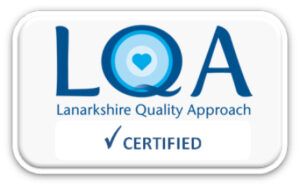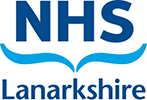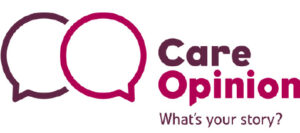My Birth, My Choices in NHS Lanarkshire
Information for patients
NHS Lanarkshire Maternity Department
PIL.MYBIRT.18_14594.W
The information in this leaflet can help you decide which would be best for you and your baby.
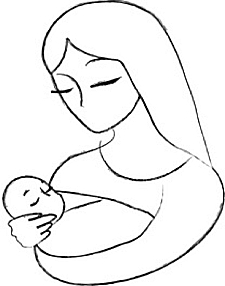
At University Hospital Wishaw we would always advocate that you should plan your birth in the maternity hospital if you are classed as high risk.
Choosing what’s best for you:
Homebirth
Is it Safe?
Is home birth safer or less safe than hospital birth for mum and baby?
When you are a healthy woman who is classed ‘low risk’ the ‘Birthplace Cohort Study’ carried out in England 2011 found:
- For women having a second or subsequent baby, there were no significant differences in poor outcomes for babies between planned home births and planned births in a maternity hospital.
- For women having a second or subsequent baby, choosing to birth away from an obstetric hospital substantially reduced the odds of having a caesarean section, instrumental delivery or episiotomy.
- For women having their first baby, a planned home birth increases the risks for baby. There were 9.3 adverse baby outcome events per 1000 planned home births compared with 5.3 per 1000 births for births planned in maternity units, and this finding was statistically significant.
- For women having their first baby, there is a fairly high probability of transferring to an obstetric hospital during labour or immediately after birth. (The rate was 45% for planned home births transferring to obstetric unit)
(The Birthplace Cohort Study 2011 https://www.npeu.ox.ac.uk/birthplace)
Transfer to hospital during a homebirth
There may be a need to transfer your care to the hospital during your labour and birth. It is a good idea to have a bag packed ready with some essential items in case a transfer to hospital is needed.
The transfer will be by ambulance with paramedic staff and your midwife will also accompany you. If your midwife is unable to stay with you after your transfer to hospital, your care will be handed over to a hospital midwife.
Some labour and birth events require immediate access to medical advice and advanced resuscitation which are not available in the home. Transfer delays to hospital may have adverse consequences. Reasons for transfer may include:
- Lack of progress in labour
- Concerns about the well-being of your baby
- Concerns about your wellbeing
- Bleeding
- Problems with delivery of your placenta
Your partner in labour will be given information on a call card should emergency assistance be required. The midwife will talk your birthing partner through this card before the delivery.
What you will need for a homebirth
You may wish to have the option of using diamorphine (painkiller) for your labour; if so, your midwife will arrange for this to be available. These drugs must be stored in a safe cupboard and out of reach of young children.
Your midwife will arrange for equipment to be delivered to your home a few weeks before your due date. Entonox (gas and air mix to help you work with the pain of labour), oxygen, and basic portable resuscitation. This equipment should be stored in a secure place, particularly if there are other children in the house.
Most women need and prefer to have their birth partners with them throughout labour and birth. This means that another adult should be available to look after any other children in your home and to relieve your birth partner. The birth room needs to be an adequate size to enable a safe birth, remembering that usually two midwives, your partner and the equipment will be with you. You may also wish to consider if you would be happy for student midwife to attend your birth.
If you are hiring a birthing pool, the size and weight of the pool will need to be taken into account; your community midwife can talk to you about any concerns you may have. Birthing pools can be hired or bought from a variety of sources, but should be an approved make and model. We also recommend that heated birthing pools (incorporating both a
re-circulation pump and heater) filled in advance of labour, should not be used for labour or birth in the home setting. (NHS NSS 2014)
During labour, the membranes around the baby may break and the waters leak away. This fluid and any blood loss can damage furniture, carpets, and home furnishings such as bedding. Therefore, it is advisable to have ready plenty of clean linen and towels and adequate protection for the bed/seats, pillows and floor with non- plastic, non-slip waterproof sheets. Large waterproof dustsheets are available from most DIY stores.
Easy access to a bathroom and plenty of hot water for bathing before and after birth also makes homebirth easier. Most women in established labour do not feel like eating a great deal, but it is important to have regular drinks (isotonic drinks are good). However, your birth partner and your midwife may need to eat if your labour is long.
When you go into labour it is important to contact us sooner rather than later as the midwife may have to travel a considerable distance and could be delayed by traffic. Please ensure that you have a working phone (or have topped up your mobile with credit) so you are able to contact your midwife when you need our assistance.
Planning to give birth in a midwife led unit in Lanarkshire
What is an alongside midwife led unit (AMU)?
An AMU is a maternity unit where the midwives are the lead professional. NHS Lanarkshire has one unit situated within University Hospital Wishaw on the same site as the Consultant Led Unit.
Evidence from the National Institute for Care Excellence (NICE) highlights that midwife led units are particularly suitable for healthy women having a straight forward pregnancy because:
Birthing in a midwife led unit is just as safe for your baby as a consultant led unit.
Giving birth in an alongside midwife led unit
Midwife led units are particularly suitable for healthy women having a straightforward pregnancy with a single baby. Definition of a straightforward pregnancy is one which:
- You do not have any pre-existing problems which are affecting the pregnancy.
- A problem you had in a previous pregnancy or birth is not likely to happen again or
- You do not have a problem in this pregnancy requiring ongoing consultant care.
You can plan to give birth in an alongside midwife led unit if you:
- Are aged between 16 and 40 years at time of booking appointment
- Have a body mass index (BMI) at booking appointment between 18 and 35
- Have a last recorded blood count of at least 10
- Have had no more than four births
- Had your waters break on their own less than 24 hours ago and you have no sign of infection and are feeling well
- Had a threatened early labour which settled
- Have a health condition that does not affect your pregnancy or your general health
- Your waters have gone and they are slightly green in colour (and after admission assessment you and your baby are otherwise assessed as well)
- Had a previous third degree tear that healed well and not given you any ongoing problems
- Had previous cervical treatment and have reached 37 weeks with no related problems.
In addition, women who do not meet the criteria as outlined above in this leaflet, following assessment and informed discussion, can plan to give birth in an alongside midwife led unit if you:
- Are aged under 16 or aged over 40 years at booking appointment.
- Have a BMI at booking appointment of >35 & <45 and have good mobility.
- Have a blood count (haemoglobin) of at least 8.5 when last recorded and this will be rechecked on admission.
- Have had more than 5 previous births
- Had your waters break on their own more than 24 hours, you are in established labour and you have no sign of infection.
- Had bleeding (PPH) after a previous birth, but did not require surgery
- Have had an extensive vaginal, cervical, or perineal tear during previous childbirth
- Are in labour following induction with prostaglandins (pessary/gel but not drip)
- Have been told you have Group B Strep positive in this pregnancy and have no signs of infection (there is no contra-indication for pool use)
- Your have had one previous caesarean section and wish to aim for VBAC without the need for prostaglandins.
There may be occasions where we would recommend continuous monitoring of the baby’s heartbeat during labour, or an admission assessment trace. We have CTG monitors which work wirelessly (telemetry) to facilitate mobility and can also be used whilst in birthing pool. This would be discussed with you during your antenatal and/or triage contact with the midwife.
What if I go into labour early or I am overdue?
It is recommended that you birth in an alongside midwife unit if your pregnancy is between 37 and 42 weeks (up to 15 days post 40 weeks) and you have met the criteria as outlined in this leaflet.
Planning a birth in an obstetric led maternity unit
The obstetric led delivery suite provides care from the maternity team. The obstetrician, anaesthetist and midwife.
We recommend our Obstetric Led Delivery Suite as the preferred option for women who have a medical problem, complication of pregnancy or have experienced a significant complication in a previous pregnancy.
We would also recommend the Obstetric led Delivery Suite should you wish to have epidural pain relief. This involves the anaesthetic team in your care.
You should seek advice from your local midwife when planning your place of birth. If you have any queries or difficulties, you can arrange an appointment with the consultant midwife birth choice clinic. Please ask your local midwife to make a referral.
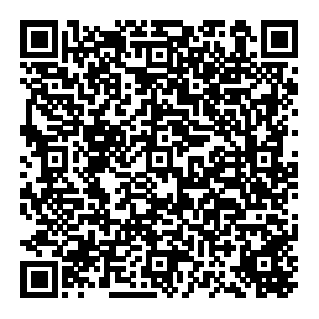
Pub. date: April 2022
Review date: April 2024
Issue No: 03
Reference: PIL.MYBIRT.18_14594.W
22_06860
If you need this information in another language or format, please e-mail:
